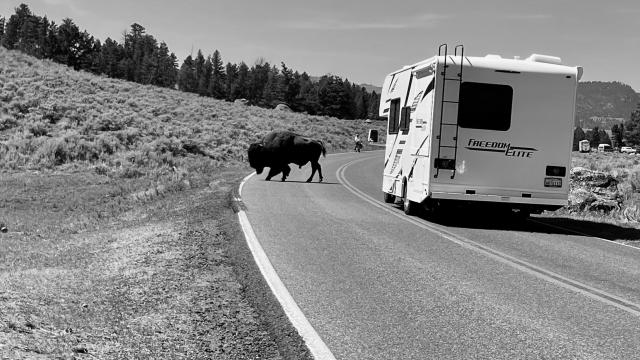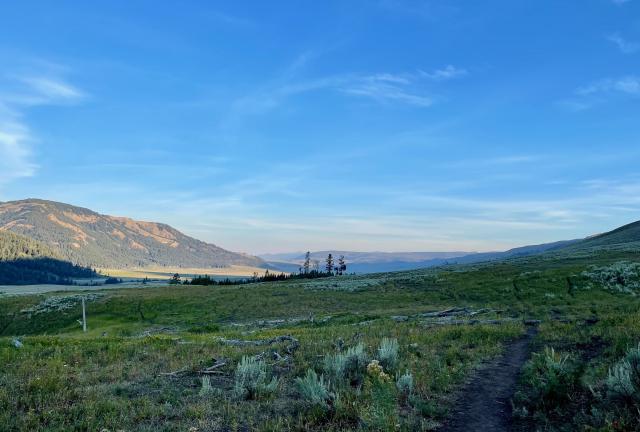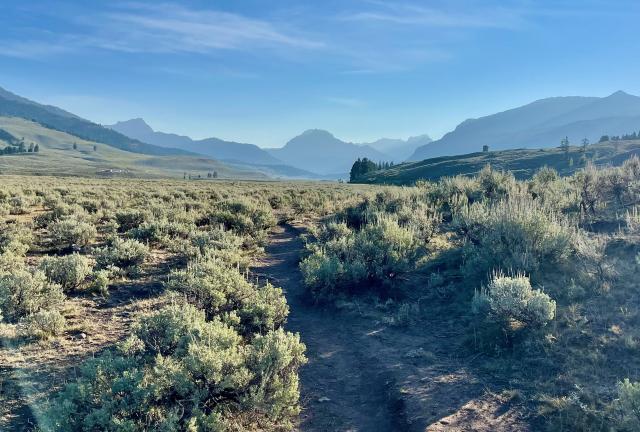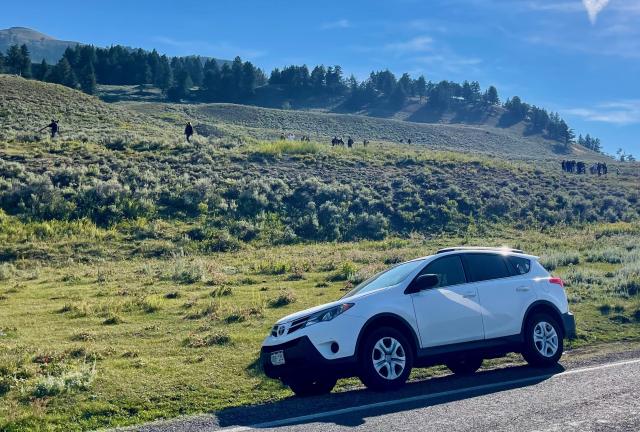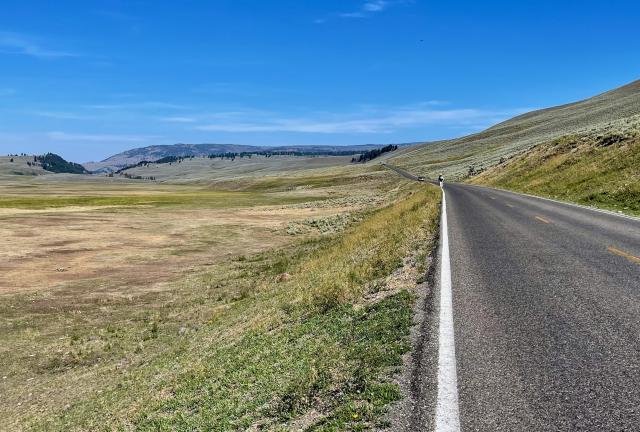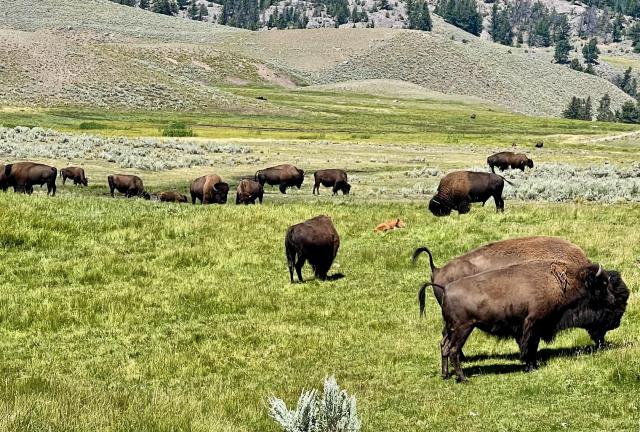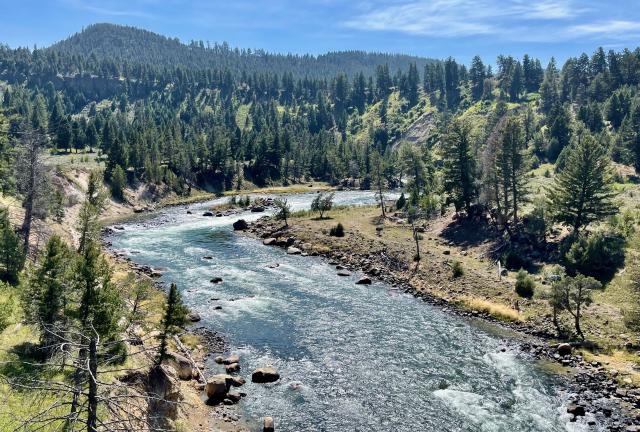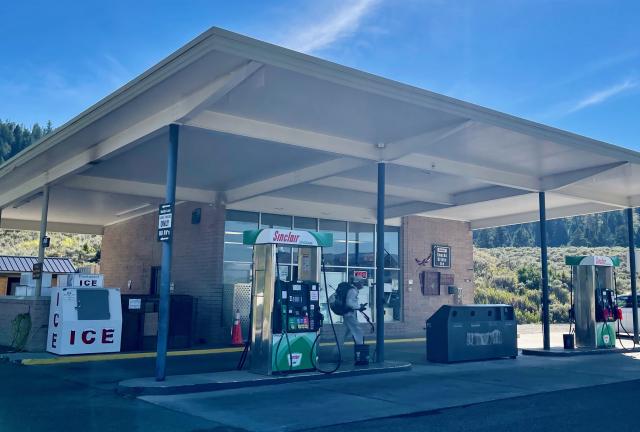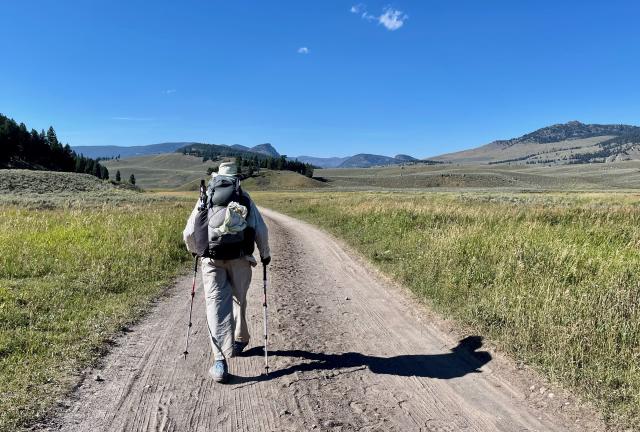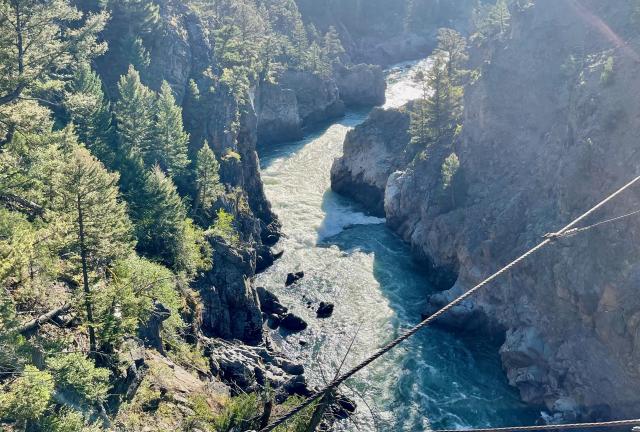Wildlife was the reason the tourists were here. Many are driven here in vans by tour guides. We saw several groups that stopped to stake out a place to watch for bison or wolves.
Top O' and I heard wolves howling this morning. Some tourists told us they saw wolves eating a dead bison, but we were unable to see them.
So far, I only saw some very distant bison, plus a few ducks and a garter snake. We were able to score our first trail magic, however.
When Top O' arrived at a pullout where some tourists had stopped to watch some faraway bison, he was offered soft drinks and beer. He made sure I got an IPA.
The time was only 9 a.m., but I was not going to let that stop me from drinking a beer. This was as good a time for extra calories and hydration as any.
While chatting with the tourists, I asked them about their car rental. I had heard it was difficult to rent cars lately because COVID-19 had disrupted the business. This was a concern for me because Kim and I were starting to plan for her to meet me when I reached the Canadian border. The tourists confirmed what I had heard, that rental fees had skyrocketed.
Later, I got some more trail magic. A car pulled up next to me while I was walking along the road by myself. A woman rolled down the window and offered me an apple. She also offered me some water, but I had plenty.
